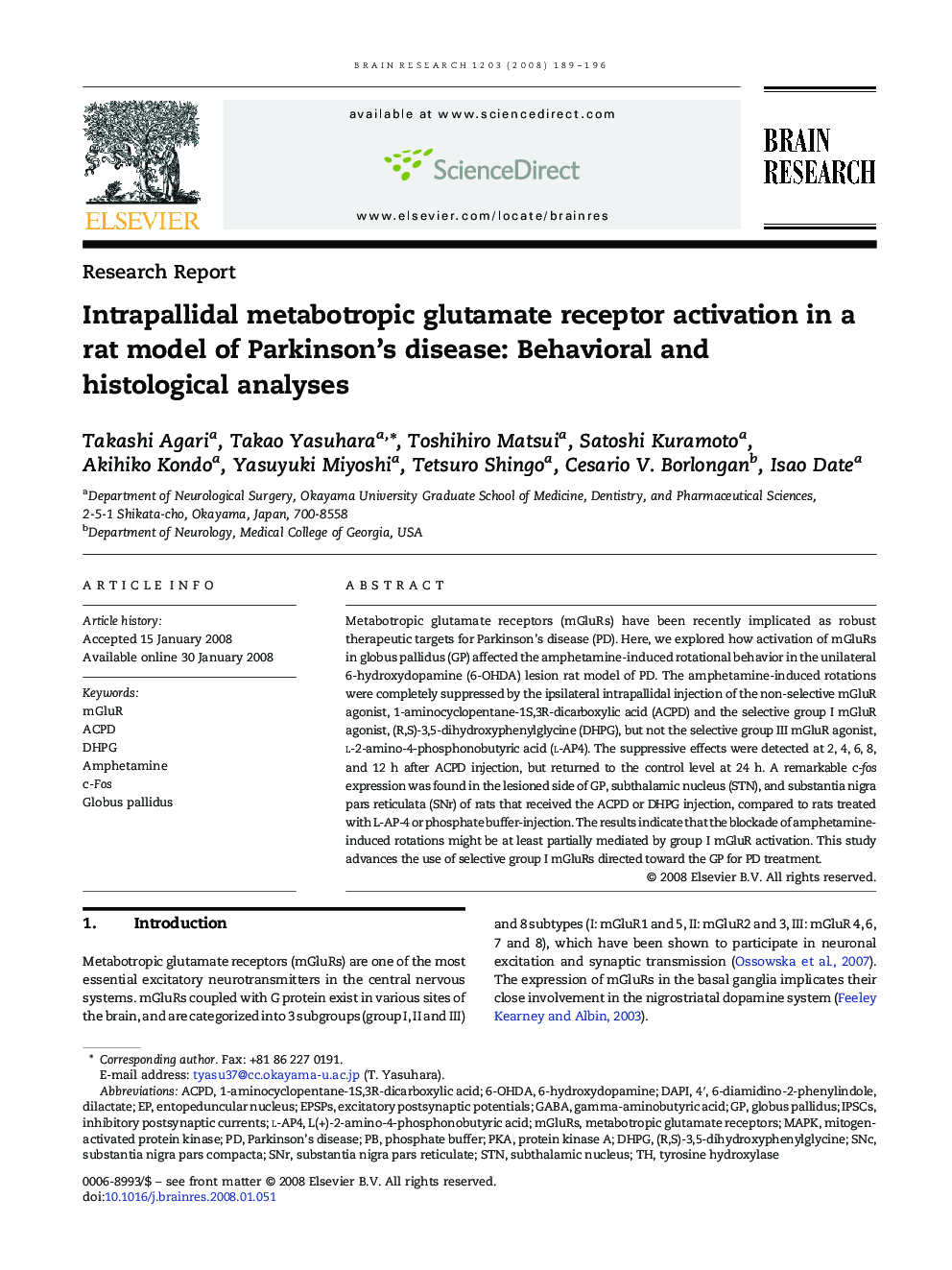| Article ID | Journal | Published Year | Pages | File Type |
|---|---|---|---|---|
| 4329967 | Brain Research | 2008 | 8 Pages |
Abstract
Metabotropic glutamate receptors (mGluRs) have been recently implicated as robust therapeutic targets for Parkinson's disease (PD). Here, we explored how activation of mGluRs in globus pallidus (GP) affected the amphetamine-induced rotational behavior in the unilateral 6-hydroxydopamine (6-OHDA) lesion rat model of PD. The amphetamine-induced rotations were completely suppressed by the ipsilateral intrapallidal injection of the non-selective mGluR agonist, 1-aminocyclopentane-1S,3R-dicarboxylic acid (ACPD) and the selective group I mGluR agonist, (R,S)-3,5-dihydroxyphenylglycine (DHPG), but not the selective group III mGluR agonist, l-2-amino-4-phosphonobutyric acid (l-AP4). The suppressive effects were detected at 2, 4, 6, 8, and 12Â h after ACPD injection, but returned to the control level at 24Â h. A remarkable c-fos expression was found in the lesioned side of GP, subthalamic nucleus (STN), and substantia nigra pars reticulata (SNr) of rats that received the ACPD or DHPG injection, compared to rats treated with L-AP-4 or phosphate buffer-injection. The results indicate that the blockade of amphetamine-induced rotations might be at least partially mediated by group I mGluR activation. This study advances the use of selective group I mGluRs directed toward the GP for PD treatment.
Keywords
Related Topics
Life Sciences
Neuroscience
Neuroscience (General)
Authors
Takashi Agari, Takao Yasuhara, Toshihiro Matsui, Satoshi Kuramoto, Akihiko Kondo, Yasuyuki Miyoshi, Tetsuro Shingo, Cesario V. Borlongan, Isao Date,
